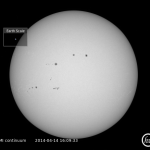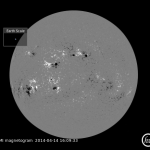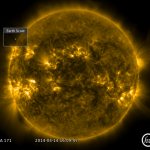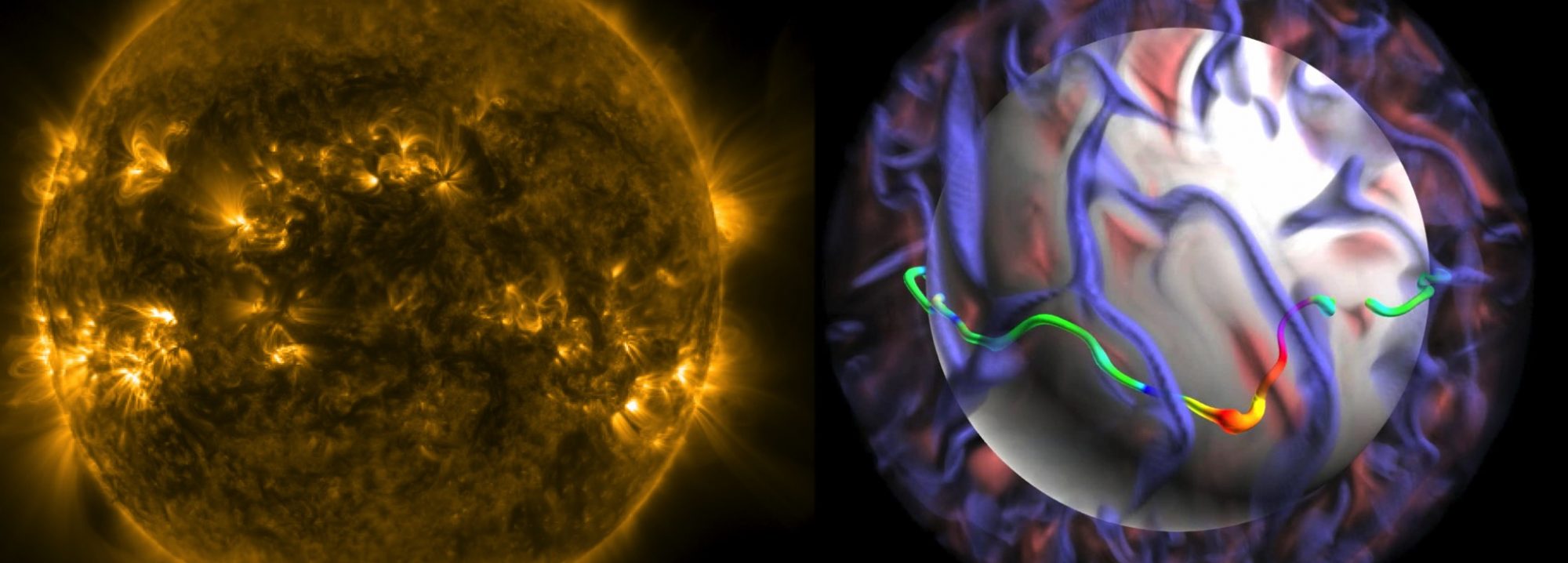Background
We live with a star whose turbulent fluid motions generate substantial magnetic activity, posing a threat to our technological world. Further, we know there are many worlds in the habitable zone around their host star, many of which are impacted by stellar magnetism. A complete theory of solar and stellar dynamo behavior remains an enduring challenge. My research focuses on exploring the processes at work in stellar interiors that give rise to observed trends in differential rotation, magnetism, and surface patterns of starspots. This work is primarily computation in nature, and utilizes both one-dimensional and three-dimensional magnetohydrodynamic (MHD) codes.
The Sun – Our Own Stellar Magnetism Laboratory
Our Sun creates its own magnetic fields through dynamo action, converting kinetic energy into magnetism through rotation, convection of its hot plasma, and shearing fluid flows in its interior. Every ~11 years, the Sun goes through a cycle of activity where its magnetism waxes and wanes. The Sun’s last peak in magnetic activity occurred in April 2014, corresponding with the images below.



Observing the Sun in different wavelengths of light and with different techniques allows us to understand the various physical processes occurring in different layers on the Sun. One indicator of the Sun’s magnetic activity are intense dark patches on its surface referred to as sunspots (left image). Intense concentrations of magnetism locally suppress convective heat transport, making the area cooler and therefore much darker than its surroundings. Sunspots typically occur in pairs. Magnetic maps of the Sun’s surface, called magnetograms (middle image), reveal that these sunspot pairs are typically bipolar. In the white spot of the pair, the magnetic field will be pointed outward from the Sun, but will be pointed inward toward the Sun in the black spot. Sunspot regions are sometimes referred to as active regions because they are often the center of strong magnetic activity. Giant loops of magnetism suspend above these active regions, connecting the bipolar portions of the sunspot pairs, are observed well in ultraviolet wavelengths (right image). These loops of magnetism are constantly moving around, building and releasing energy. Active regions are often the site of solar storms, intense explosions of magnetic energy from the Sun’s surface in the form of events called flares or coronal mass ejections.
Solar physicists still don’t have a complete theory to describe and ultimately predict the Sun’s magnetic behavior. To truly understand the Sun’s dynamo, we must turn to simulations that probe the dynamic fluid and magnetic process taking place in the Sun’s deep interior, well beyond the reach of telescopes. These simulations are motivated and verified by the increasing fidelity of observations of the Sun’s magnetism taken by spacecraft and ground-based telescopes.
The Magnetic-Activity Correlation and the Trouble with M Dwarfs
More Content Coming Soon!
How does the Sun get its spots?
Studying the influence of convection on rising bundles of magnetism that may be sunspot progenitors.
More Content Coming Soon!
How do other cool stars get their spots?
More Content Coming Soon!
Stellar Near Surface Shear Layers
More Content Coming Soon!
Convection and Magnetism in M Dwarfs
More Content Coming Soon!
